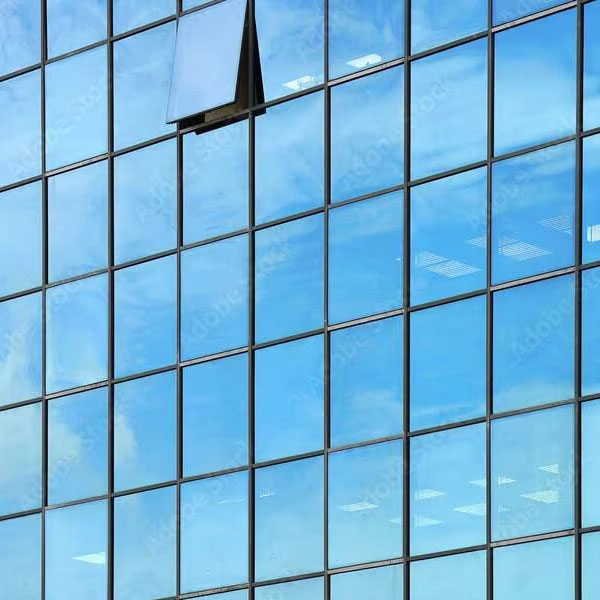Reflective glass, also known as mirror glass or one-way mirror, is a type of glass that has been treated or coated to reflect light and/or heat. It is commonly used in architecture, automotive applications, and various other industries.
The reflective properties of the glass are typically achieved through the application of a thin metallic or metallic oxide coating to one side of the glass surface. This coating allows the glass to reflect a significant portion of the light that hits it, giving it a mirrored appearance from one side while allowing some light to pass through from the other side.
Reflective glass serves multiple purposes:
- Privacy: In architectural applications, reflective glass is often used to provide privacy. When installed in windows, it allows people inside a building to see out while preventing those outside from seeing in during the daytime. However, at night, when the interior is more brightly lit than the exterior, the effect may reverse.
- Solar Control: Reflective glass can also help control solar heat gain by reflecting a portion of the sunlight away from the building. This helps to reduce the amount of heat that enters the building’s interior, which can lead to energy savings on cooling costs.
- Aesthetic Appeal: Reflective glass is often chosen for its aesthetic appeal, giving buildings a sleek, modern appearance. It can also enhance the appearance of automobiles and other vehicles.
- Security: In some cases, reflective glass can provide a level of security by making it difficult for outsiders to see into a building or vehicle.
Reflective glass comes in various colors and levels of reflectivity, allowing architects and designers to choose the option that best suits their aesthetic and functional requirements.

Ready to Build with Glass? Start Your Project Today.
Discover professional processing and toughened glass solutions tailored for your needs.
Get a Free Quote Today!
